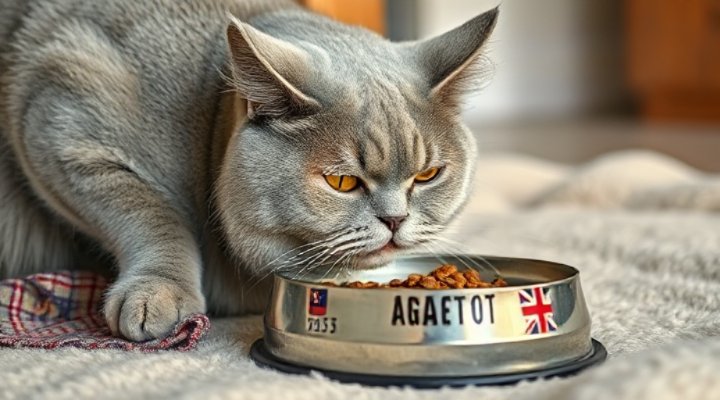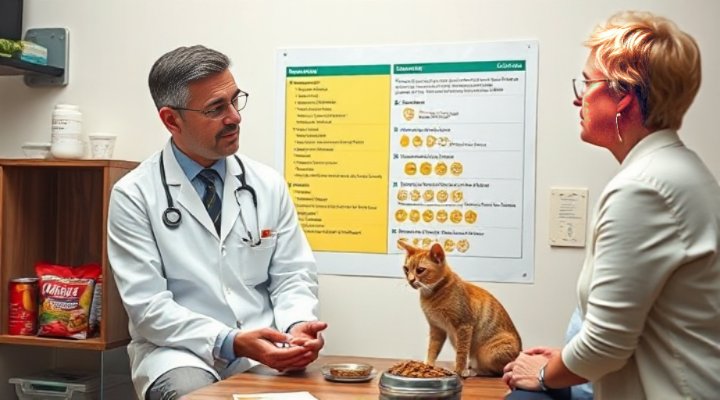When it comes to our feline companions, nothing is more important than their health and wellbeing. That’s why choosing the right cat food is one of the most crucial decisions you’ll make as a pet owner. After all, as the saying goes, ‘You are what you eat’ – and this applies to our cats just as much as it does to us!

Understanding Your Cat’s Nutritional Needs
Cats are obligate carnivores, which means they require a diet primarily composed of meat. Unlike dogs or humans, cats have specific nutritional requirements that must be met through their cat food. For instance, they need taurine, an essential amino acid found only in animal tissue. Without it, cats can develop serious health problems.
Furthermore, cats have different nutritional needs at various life stages. Kittens, adults, and senior cats all require specially formulated cat food to thrive. If you’re unsure about your cat’s specific needs, consulting with your veterinarian is always a good idea. Our article on cat training also touches on how diet affects behavior.

Wet vs. Dry Cat Food: The Great Debate
One of the most common questions cat owners face is whether to feed wet or dry cat food. Each has its advantages:
- Wet food provides more moisture, which is great for cats who don’t drink enough water
- Dry food can be more convenient and helps with dental health
- Many experts recommend a combination of both
The American Veterinary Medical Association (AVMA) suggests that the best choice depends on your cat’s individual needs and preferences. Some cats, like those with urinary tract issues, might benefit more from wet food, while others do well on dry.

Reading Cat Food Labels Like a Pro
Navigating the world of cat food labels can feel like deciphering hieroglyphics. Here’s what to look for:
- Named protein source as the first ingredient (e.g., ‘chicken’ not ‘meat’)
- Complete and balanced nutrition statement
- Appropriate life stage designation
- Avoid excessive fillers like corn and wheat
Remember, just because a cat food is expensive doesn’t necessarily mean it’s better. For more tips on understanding pet products, check out our guide on walking your cat which includes nutrition tips for active felines.

Special Dietary Considerations
Some cats have special dietary needs that require particular attention:
- Senior cats may need lower-calorie, higher-fiber food
- Overweight cats benefit from portion-controlled meals
- Cats with allergies might require limited ingredient diets
The USDA’s Animal and Plant Health Inspection Service (APHIS) provides excellent resources on pet nutrition that can help you make informed choices for cats with special needs.

Transitioning to New Cat Food
When changing your cat’s diet, it’s important to do so gradually to avoid digestive upset. Here’s a simple transition schedule:
| Day | Old Food | New Food |
|---|---|---|
| 1-2 | 75% | 25% |
| 3-4 | 50% | 50% |
| 5-6 | 25% | 75% |
| 7+ | 0% | 100% |
If you notice any adverse reactions during the transition, consult your veterinarian immediately. For more on cat health, our article on clicker training includes tips on using food rewards effectively.
Homemade Cat Food: Yay or Nay?
While some pet owners consider making their own cat food, this requires careful planning to ensure nutritional completeness. Unless you’re working with a veterinary nutritionist, commercial cat food that meets AAFCO standards is generally the safer choice.
Final Thoughts on Feline Nutrition
Choosing the right cat food is one of the best ways to show your love for your feline friend. By understanding their nutritional needs, reading labels carefully, and making informed choices, you can help ensure your cat lives a long, healthy, and happy life. Remember, when in doubt, your veterinarian is always the best resource for personalized advice about your cat’s diet.
Related Keywords: best cat food brands, grain-free cat food, organic cat food, kitten food, senior cat food, hypoallergenic cat food, raw diet for cats

